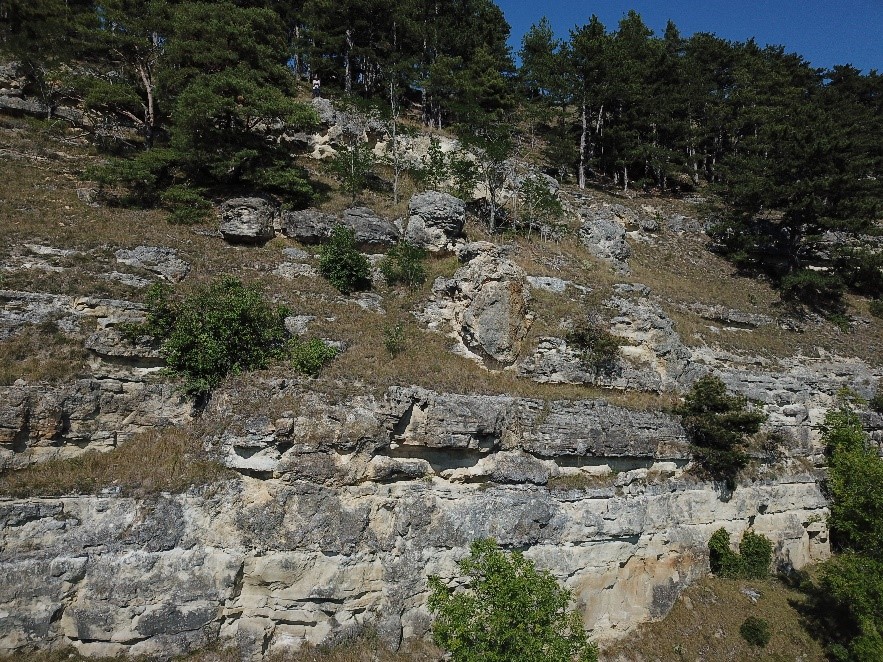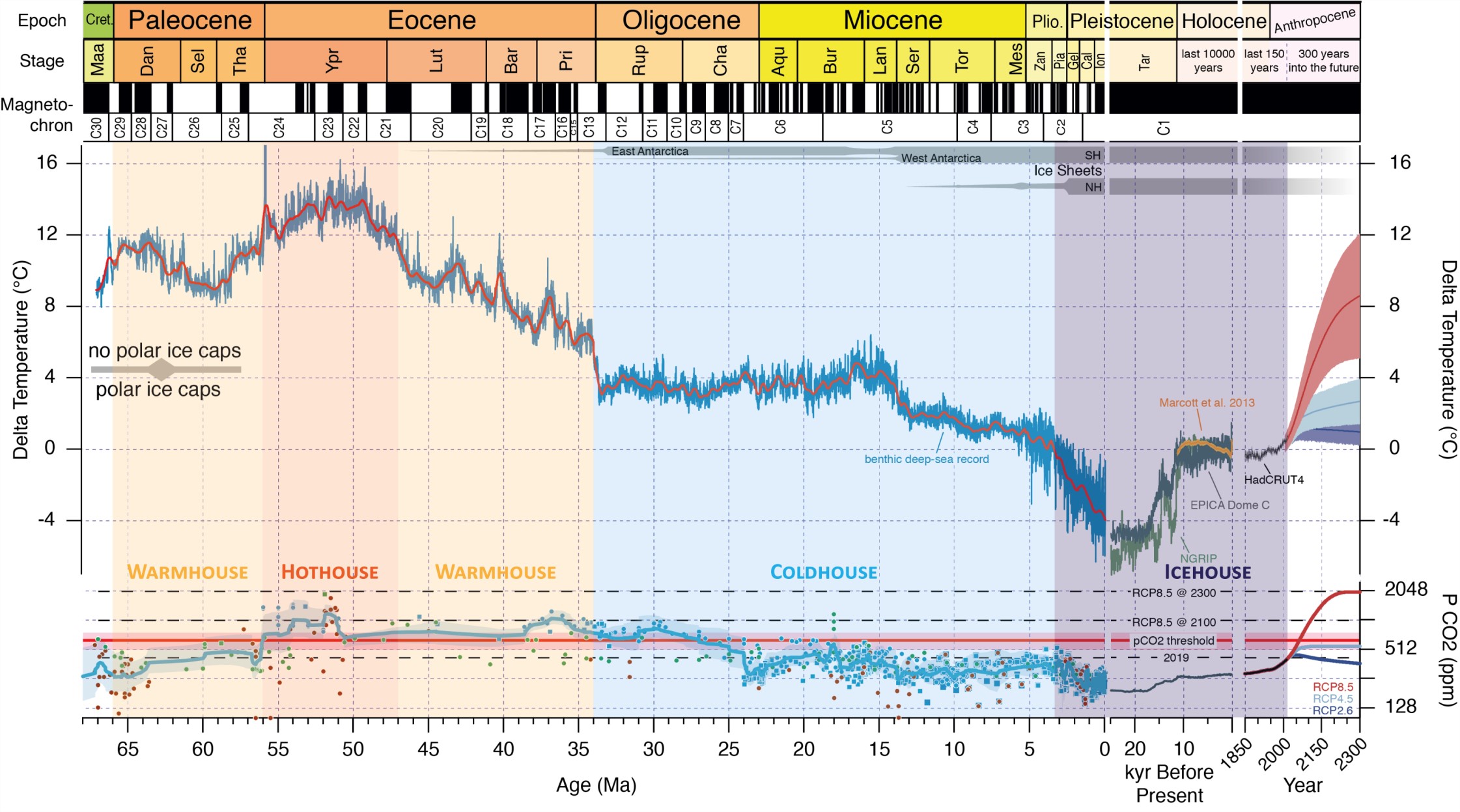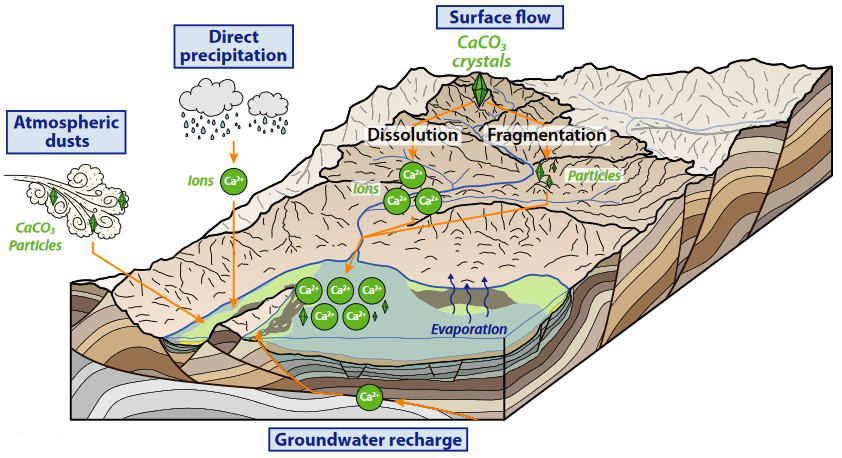Guillaume Lawnizack PhD thesis
 Roles of continental weathering and microbial activity on the evolution of lacustrine systems (Limagnes basin) in the context of late Eocene to early Miocene climate transitions (Project: LIMAGNES)
Roles of continental weathering and microbial activity on the evolution of lacustrine systems (Limagnes basin) in the context of late Eocene to early Miocene climate transitions (Project: LIMAGNES)
Started in october 2023
Supervisors: Pierre Pellenard & Emmanuelle Vennin
Funding: doctoral grant
Abstract
 In the modern context of climate change and associated biodiversity erosion, understanding past climate transitions is a key question to constrain climate models. The climatic transition that abruptly formed the Antarctic polar icecap during the Eocene/Oligocene transition (~34 Ma) characterizes the shift from Greenhouse to Icehouse global conditions. The record of extreme climatic disruptions in continental environments is still little studied, although it constitutes a major way to understand the carbon cycle. This PhD subject will investigate how climatic events from the late Eocene to the early Miocene are recorded in the Limagnes lacustrine system (Massif Central). An integrative multidisciplinary approach will combine analyses of facies/microfacies, mineralogy (including clay assemblages), and isotopic geochemistry (Hf-Nd combined isotopes), on outcrops and deep BRGM cores. The local tectonic context inducing rift basins governed by strong subsidence provides an exceptional opportunity to study the continuous evolution of lacustrine sedimentation from detrital deposits to microbial carbonates. The main objectives of this PhD focus on the effects of variations in continental weathering linked to hydrolysis conditions and the role of microbial activities on the lacustrine carbonate production.
In the modern context of climate change and associated biodiversity erosion, understanding past climate transitions is a key question to constrain climate models. The climatic transition that abruptly formed the Antarctic polar icecap during the Eocene/Oligocene transition (~34 Ma) characterizes the shift from Greenhouse to Icehouse global conditions. The record of extreme climatic disruptions in continental environments is still little studied, although it constitutes a major way to understand the carbon cycle. This PhD subject will investigate how climatic events from the late Eocene to the early Miocene are recorded in the Limagnes lacustrine system (Massif Central). An integrative multidisciplinary approach will combine analyses of facies/microfacies, mineralogy (including clay assemblages), and isotopic geochemistry (Hf-Nd combined isotopes), on outcrops and deep BRGM cores. The local tectonic context inducing rift basins governed by strong subsidence provides an exceptional opportunity to study the continuous evolution of lacustrine sedimentation from detrital deposits to microbial carbonates. The main objectives of this PhD focus on the effects of variations in continental weathering linked to hydrolysis conditions and the role of microbial activities on the lacustrine carbonate production.
 Keywords
Keywords
carbonates, weathering, paleoclimate, lacustrine, microbilaites
- extrait:
- lien_externe:
- titre:
- Les rôles de l'altération continentale et de l'activité microbienne sur l'évolution de systèmes lacustres (bassin des Limagnes) dans le contexte de transitions climatiques fin Éocène à début Miocène (Projet : LIMAGNES)
- date_de_debut_these:
- octobre 2023
- nom:
- Lawnizack
- date_de_debut_these_numerique:
- 202310
- kc_data:
- a:8:{i:0;s:0:"";s:4:"mode";s:0:"";s:3:"css";s:0:"";s:9:"max_width";s:0:"";s:7:"classes";s:0:"";s:9:"thumbnail";s:0:"";s:9:"collapsed";s:0:"";s:9:"optimized";s:0:"";}
- kc_raw_content:
 Roles of continental weathering and microbial activity on the evolution of lacustrine systems (Limagnes basin) in the context of late Eocene to early Miocene climate transitions (Project: LIMAGNES)
Roles of continental weathering and microbial activity on the evolution of lacustrine systems (Limagnes basin) in the context of late Eocene to early Miocene climate transitions (Project: LIMAGNES)Started in october 2023
Supervisors: Pierre Pellenard & Emmanuelle Vennin
Funding: doctoral grant
Abstract
 In the modern context of climate change and associated biodiversity erosion, understanding past climate transitions is a key question to constrain climate models. The climatic transition that abruptly formed the Antarctic polar icecap during the Eocene/Oligocene transition (~34 Ma) characterizes the shift from Greenhouse to Icehouse global conditions. The record of extreme climatic disruptions in continental environments is still little studied, although it constitutes a major way to understand the carbon cycle. This PhD subject will investigate how climatic events from the late Eocene to the early Miocene are recorded in the Limagnes lacustrine system (Massif Central). An integrative multidisciplinary approach will combine analyses of facies/microfacies, mineralogy (including clay assemblages), and isotopic geochemistry (Hf-Nd combined isotopes), on outcrops and deep BRGM cores. The local tectonic context inducing rift basins governed by strong subsidence provides an exceptional opportunity to study the continuous evolution of lacustrine sedimentation from detrital deposits to microbial carbonates. The main objectives of this PhD focus on the effects of variations in continental weathering linked to hydrolysis conditions and the role of microbial activities on the lacustrine carbonate production.
In the modern context of climate change and associated biodiversity erosion, understanding past climate transitions is a key question to constrain climate models. The climatic transition that abruptly formed the Antarctic polar icecap during the Eocene/Oligocene transition (~34 Ma) characterizes the shift from Greenhouse to Icehouse global conditions. The record of extreme climatic disruptions in continental environments is still little studied, although it constitutes a major way to understand the carbon cycle. This PhD subject will investigate how climatic events from the late Eocene to the early Miocene are recorded in the Limagnes lacustrine system (Massif Central). An integrative multidisciplinary approach will combine analyses of facies/microfacies, mineralogy (including clay assemblages), and isotopic geochemistry (Hf-Nd combined isotopes), on outcrops and deep BRGM cores. The local tectonic context inducing rift basins governed by strong subsidence provides an exceptional opportunity to study the continuous evolution of lacustrine sedimentation from detrital deposits to microbial carbonates. The main objectives of this PhD focus on the effects of variations in continental weathering linked to hydrolysis conditions and the role of microbial activities on the lacustrine carbonate production. Keywords
Keywordscarbonates, weathering, paleoclimate, lacustrine, microbilaites
